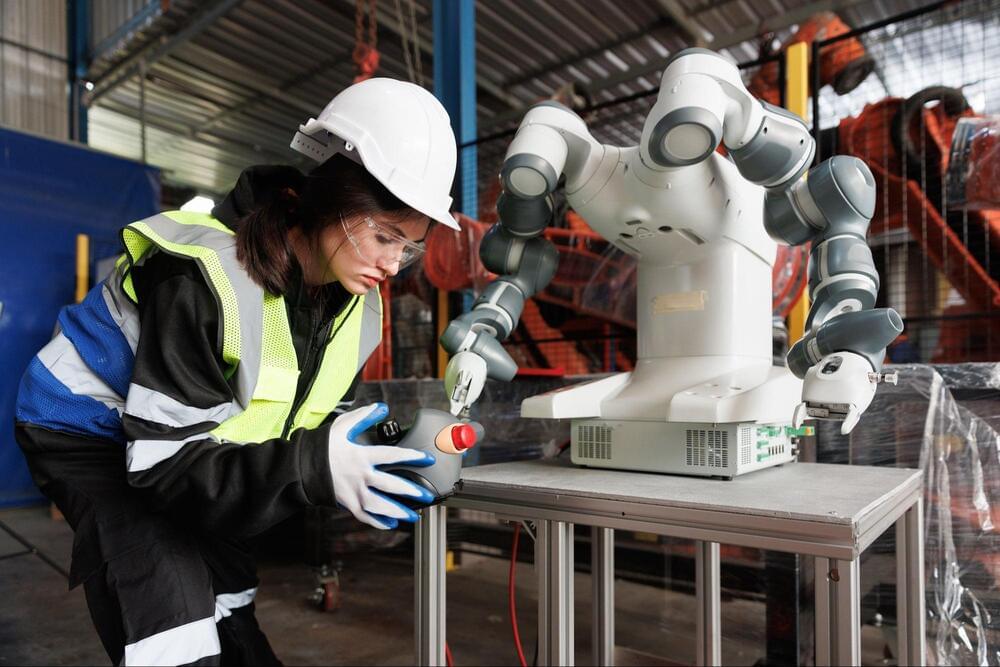Automation is many things, but apparently, it is not gender-neutral.



The US dispatched four navy warships as well as a reconnaissance airplane after multiple Chinese and Russian military vessels carried out a joint naval patrol near Alaska last week.
The combined naval patrol, which the Wall Street Journal first reported, appeared to be the largest such flotilla to approach US territory, according to experts that spoke to the outlet.


Fuel cells are compact energy conversion units that utilize clean energy sources like hydrogen and convert them into electricity through a series of oxidation–reduction reactions. Specifically, proton exchange membrane fuel cells (PEMFCs), an integral part of electric vehicles, utilize proton-conductive membranes for operation. Unfortunately, these membranes suffer from a trade-off between high durability and high ion conductivity, affecting the lifetime and performance of PEMFCs.
To overcome this issue, scientists have synthesized chemically and physically modified perfluorosulfonic acid polymer membranes, such as Nafion HP, Nafion XL, and Gore-Select, which have proven to be much more durable than unmodified membranes conventionally employed in fuel-cell operations.
Unfortunately, none of the existing proton-conductive membranes have fulfilled the highly challenging technical target—passing an accelerated durability test or a combined chemical and mechanical test—set by the U.S. Department of Energy (DOE) to facilitate their use in automobile fuel cells by 2025.
We could soon see AI-powered robots taking over several jobs in Canadian grocery stores. Richard Southern with how a labour strike in one part of the country could have nationwide implications.

India’s latest space mission entered the moon’s orbit on Saturday ahead of the country’s second attempted lunar landing, as its cut-price space program seeks to reach new heights.
The world’s most populous nation has a comparatively low-budget aerospace program that is rapidly closing in on the milestones set by global space powers.
Only Russia, the United States and China have previously achieved a controlled landing on the lunar surface.


The two materials, the researchers found, can be combined with water to make a supercapacitor — an alternative to batteries — that could provide storage of electrical energy. As an example, the MIT researchers who developed the system say that their supercapacitor could eventually be incorporated into the concrete foundation of a house, where it could store a full day’s worth of energy while adding little (or no) to the cost of the foundation and still providing the needed structural strength. The researchers also envision a concrete roadway that could provide contactless recharging for electric cars as they travel over that road.
The simple but innovative technology is described this week in the journal PNAS, in a paper by MIT professors Franz-Josef Ulm, Admir Masic, and Yang-Shao Horn, and four others at MIT and at the Wyss Institute for Biologically Inspired Engineering.
MIT engineers created a carbon-cement supercapacitor that can store large amounts of energy. Made of just cement, water, and carbon black, the device could form the basis for inexpensive systems that store intermittently renewable energy, such as solar or wind energy.

“I view string theory as the most promising way to quantize matter and gravity in a unified way. We need both quantum gravity and we need unification and a quantization of gravity. One of the reasons why string theory is promising is that there are no singularities associated with those singularities are the same type that they offer point particles.” — Robert Brandenberger.
In this thought-provoking conversation, my grad school mentor, Robert Brandenberger shares his unique perspective on various cosmological concepts. He challenges the notion of the fundamental nature of the Planck length, questioning its significance and delving into intriguing debates surrounding its importance in our understanding of the universe. He also addresses some eyebrow-raising claims made by Elon Musk about the limitations imposed by the Planck scale on the number of digits of pi.
Moving on to the topic of inflation and its potential detectability, Robert sheds light on the elusive B mode fluctuations and the role they play in understanding the flaws of general relativity. He explains why detecting these perturbations at the required scale may be beyond our current technological capabilities. The discussion further explores the motivations behind the search for cosmic strings in the microwave sky and the implications they hold for particle physics models beyond the standard model.
With his expertise in gravity and the quantization of mass, Robert Brandenberger emphasizes the need for a quantum mechanical approach to gravity. He discusses the emergence of time, space, and a metric from matrix models, offering new insights into the foundations of our understanding of the universe. The speaker’s work challenges conventional notions of inflation and proposes alternative models, such as string gas cosmology, as potential solutions.
Beyond the scientific aspects, Robert Brandenberger reflects on his role as a scientist and educator. He expresses his gratitude to a mentor and shares advice he received about navigating the academic world. Additionally, he discusses the evolution of being a professor over the past three decades and shares his thoughts on the profession as a whole.
This episode leaves us with many questions, tantalizing possibilities, and a deeper appreciation for the mysteries of the cosmos. We invite you to join us in this cosmic journey as we explore the frontiers of theoretical cosmology.